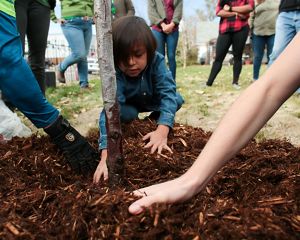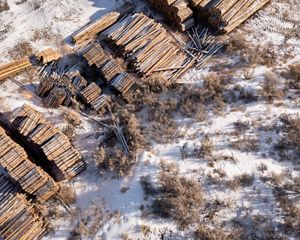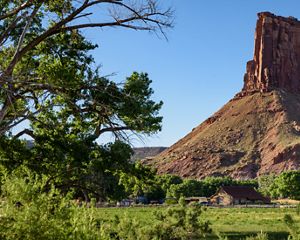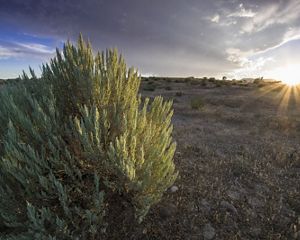Tackling Climate Change Together
Discover how communities are building resilience by working with nature.
By Kate O'Neill, Writer/Editor for The Nature Conservancy
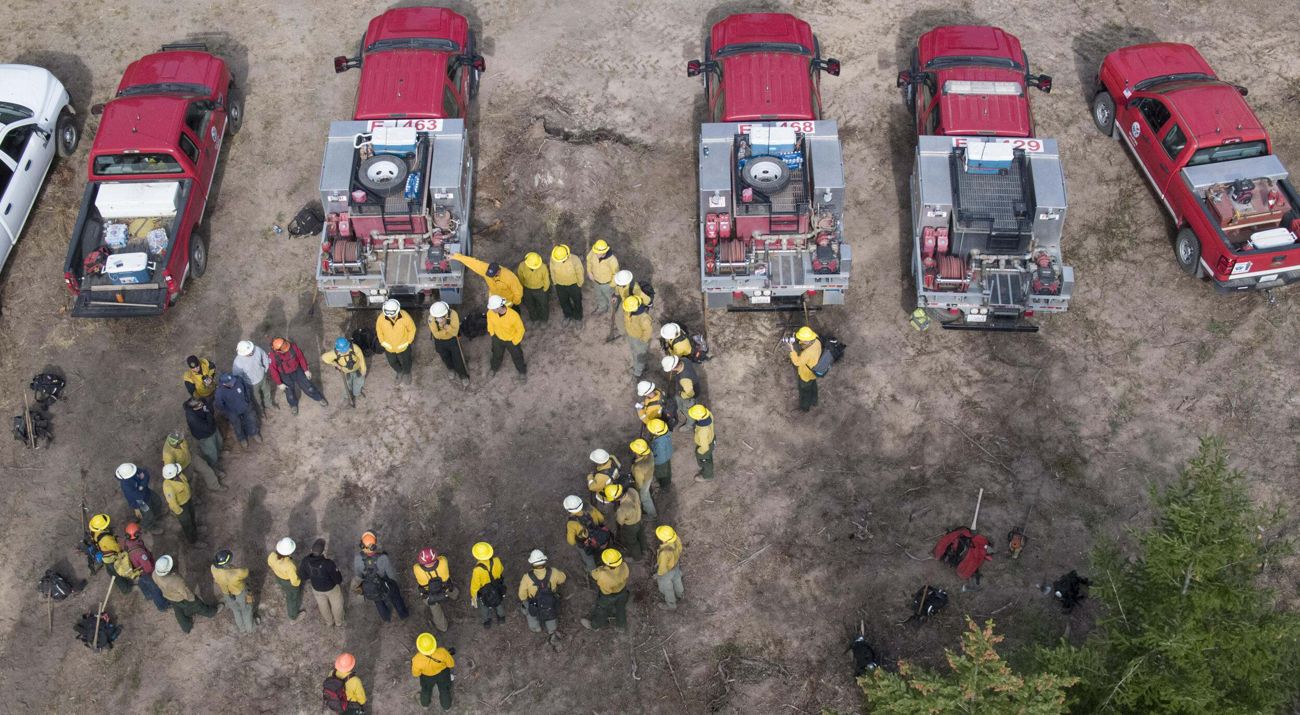
The effects of climate change can be scary and disruptive. Whether facing fire, flooding, or drought, climate events can interrupt daily life and make it hard to work, relax and care for your loved ones.
The impact of climate change might look different, depending on the landscape you call home. But, we all have in common the need to be flexible and find creative solutions as a way to invest in our future.
Communities in the Western U.S. and Canada are working together to protect their resources—forests, water, wildlife and development opportunities—to be more resilient in the face of climate change. Local solutions depend on local efforts. By tapping into the power of community—and the power of nature—we can make real progress and inspire others.
Think globally, act locally
Sign up to receive monthly conservation updates and learn how you can get involved.
Discover four communities demonstrating that unexpected solutions can come from working together, finding common ground and caring for the resources we all depend on.
Cle Elum Ridge, Washington
In the Central Cascades Forest, TNC has joined partners and community members to restore and steward Cle Elum Ridge, 10,000 acres of dynamic forest land with the small towns of Ronald, Roslyn and Cle Elum nestled below.
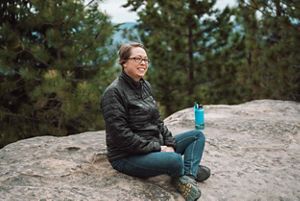
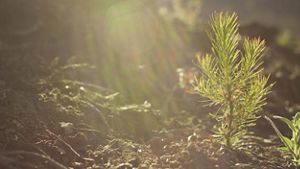
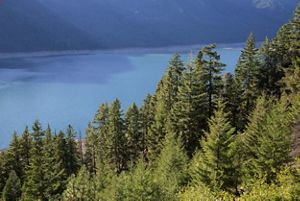
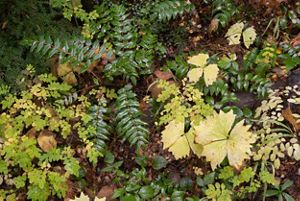

Darcy Batura: Darcy is TNC’s director of forest partnerships in Washington. © Courtney Baxter/TNC

Healthy Forests: A baby tree begins its story in the forest. © TNC

Cle Elum Lake: Taken in conjunction with acquisition of Plum Creek Timber Company land near Cle Elum, WA. © John F Marshall

Plant diversity: Taneum, South Cle Elum Ridge. Taken in conjunction with acquisition of Plum Creek Timber Company land near Cle Elum, WA. © John Marshall
In 2017, these towns were threatened by the Jolly Mountain fire. Burning for over three months and forcing the evacuation of over 150 area homes, that experience inspired the community to take action.
“It was a wake-up call for our community,” says Darcy Batura, TNC’s director of forest partnerships in Washington, who lives with her family in Roslyn. “The forest hadn't been actively managed in a very long time, and so it was totally overstocked. If that fire had taken hold and come rushing toward the communities, we would have been in big trouble.”
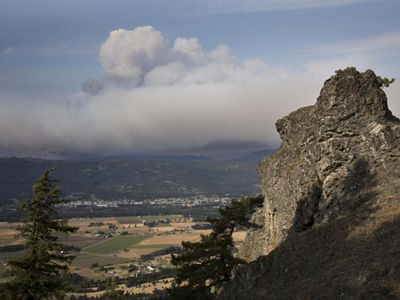
From chance fire to choice fire
Dry forests across the West, including those on Cle Elum Ridge, have evolved to coexist with fire in a regenerative cycle that keeps them healthy. A century of policies and practices that favor immediately putting out fires, and preventing Indigenous cultural burning, have disrupted this cycle and left forests full of excess vegetation, including shrubs and debris that can fuel larger, more destructive fires.
Fire is inevitable—the question is when and under what conditions forests will burn, determining if fire will be a force of destruction or renewal. In the face of climate change, drought and more extreme conditions, it’s important to be prepared.
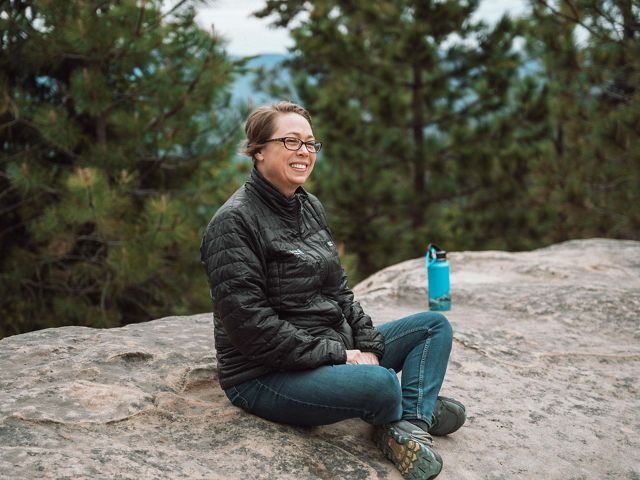
Partners in Kittitas County—local government, fire districts, land managers and more—had already come together to discuss forming a Fire Adapted Communities coalition, and the Jolly Mountain fire provided new motivation for collaborative work. That fall, the first prescribed burn was held near the town of Roslyn and below Cle Elum Ridge.
“The Jolly Mountain fire was not even out—it was still smoldering,” says Batura. “It was a lot to ask the community to have faith in setting beneficial fire.”
Building fire resilience together
A controlled burn takes a lot of planning and coordination—from removing excess vegetation, to finding the right weather window, and monitoring the fire on the ground. What makes this work possible is the cooperation of many community partners. One of those partners is Corrie Reagan.
Reagan works for the Kittitas County Fire Protection District as a community health worker. She’s also an emergency medical technician and puts in time with local service nonprofit, HopeSource. If that wasn’t enough, she’s a firefighter, and serves as Roslyn’s fire chief—as a volunteer.
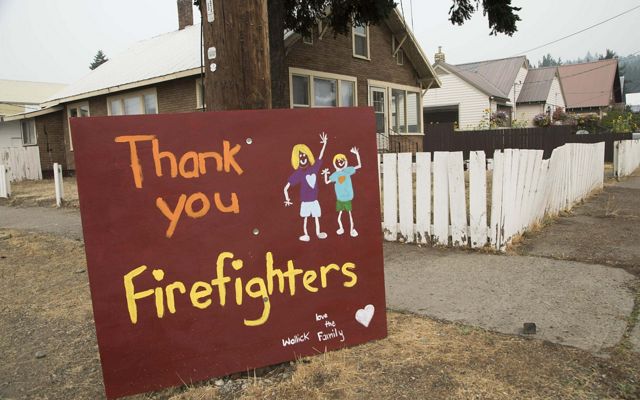
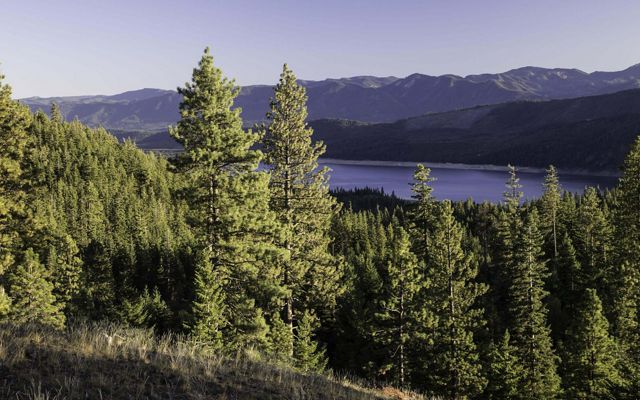
Over the years, Roslyn has become a model in the world of fire preparedness, with community members like Reagan who do their part in a complex but coordinated effort between local and state government, agencies, community organizations and nonprofit partners like TNC.
The Roslyn Fire Department supports the Upper Kittitas County Fuels Crew, which does critical preparations before prescribed burns on Cle Elum Ridge and the surrounding forest. The group institutes Firewise USA, a national program to help communities and individuals reduce their wildfire risk. The team is leading efforts to remove vegetation around homes as potential ignition sources, replace roofs and siding with more fire-resistant materials, and help neighbors who may not be able to take on these projects on their own. Proactively planned evacuation routes help make sure everyone has a safe way out if the town is threatened again.
“It's a good feeling to know we're working together to make sure that the town is safer,” says Reagan. “If something happens in the town or in the forest, we have a plan that can come together to protect both.”
That cooperation is key on controlled burn days. “There are people from every agency around the county, and everybody jumps in and helps out. You know, it will be a lifesaver if the wildfires ever come through here.”
A Living Laboratory for Conservation
Prescribed fire is just one piece of the work happening on Cle Elum Ridge, where TNC and our partners are bringing together forest restoration, applied science and recreation access for greater conservation impact while serving the surrounding communities.
In a “living laboratory” approach, Cle Elum Ridge provides the opportunity to test new treatments that can inform conservation in similar landscapes. In a recent study, TNC scientists found that strategic thinning of trees can retain snowpack longer, providing more water in the dry season and supporting local agriculture and fish habitat.
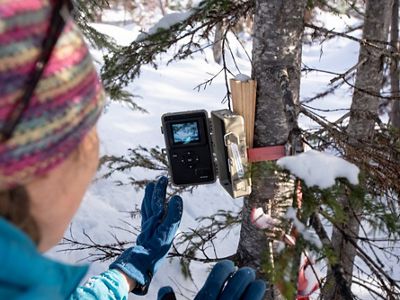
“The role of being a land manager over time, and being able to implement science and learn from it and adapt, has really been a gift on this project,” says Batura.
In this living laboratory, TNC has teamed up with Mountains to Sound Greenway Trust and other local partners to build a new trail system that connects the three towns, Cle Elum Ridge and surrounding forests. As a popular recreation area, just 90 minutes from Seattle, these trails benefit community members as well as the local economy.
Quote: Darcy Batura
Working with the communities adjacent to the Cle Elum Ridge has given us the opportunity to make sure the community sees their values reflected in this landscape, and that’s reflected in our restoration work.
Maybell, Colorado
Similar community organizing is taking place in rural Northwest Colorado, where TNC partnered with shareholders of the Maybell Irrigation District to upgrade irrigation infrastructure that diverts water from the Yampa River to sustain agriculture around the town of Maybell.


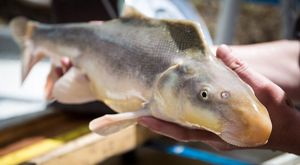
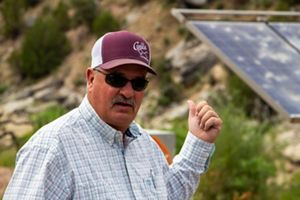

Construction: Removing large boulders from the river. © JHL Constructors

Maybell Irrigation Ditch: TNC has been working with the Maybell Irrigation District since 2017 to rehabilitate the diversion and modernize the headgate. The new structures began operating in May 2024. © Rory Doyle

Razorback Sucker: Close-up of razorback sucker. © Linda Whitham/TNC

Maybell Ditch and Diversion Tour: Rancher Mike Camblin discusses the Maybell Ditch and Diversion on a summer 2023 tour led by TNC Colorado staff and community partners. © Anna Sofia Vera/TNC
For over 126 years, opening and closing the gates that control water entering the Maybell Ditch was a grueling task, requiring a two-hour hike through rugged country to manually operate the system. An old rock dam in the channel made navigation difficult for native and endangered fish and recreational boaters, and the cumbersome gates made it difficult to control the quantity of water flowing into the Maybell Ditch. As drought and the impacts of climate change make it more important to manage water carefully, the community decided it was time for a change.
Led by local input and shared decision making, TNC and Maybell Irrigation District’s engineering and construction teams worked to modernize and enable remote operation of the Maybell Ditch headgate and improve water delivery to agricultural communities. They ensured the boulder placement at the diversion would enhance fish habitat and remove barriers to boat passage. The community joined a collaborative effort with TNC and other partners to secure funding from federal, state and private sources.
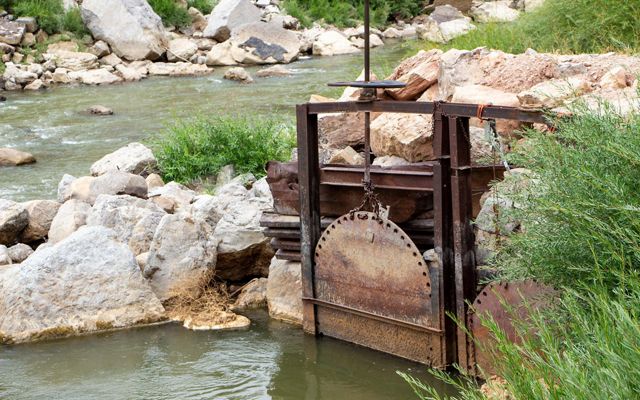
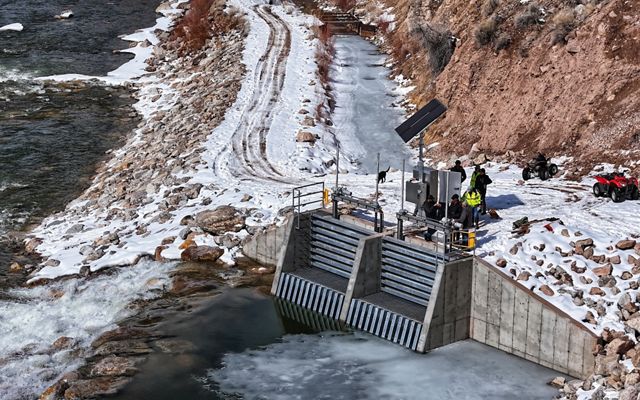
Today, the Maybell headgate can be controlled remotely based on a combination of water user needs and available flows in the Yampa River. The Maybell Irrigation District and its volunteer board work with the Upper Colorado River Endangered Fish Recovery Program and the Colorado Division of Water Resources each year to plan and manage water use during irrigation season.
Quote: Jennifer Wellman
In high desert drought conditions, every drop of water is accounted for. The new diversion offers the community a better outcome because now they can actually look at their past usage and talk about the data.
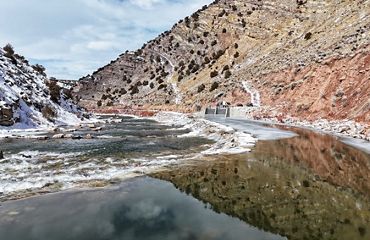
In 2024 and 2025, over 400 water users from across the West toured the Maybell Diversion to learn about lessons learned from the project. The work at Maybell provides lessons for communities looking to provide a triple benefit to water users, fish habitat and recreation.
“There were previously huge, Volkswagen Beetle-sized boulders in the river. If you hit them at the wrong angle, you could flip your boat,” says Wellman. “Now, the channel is designed to accommodate fish passage at low flows, as well as boaters. The feedback we got throughout last year was that the new diversion functioned well, and we didn't take the fun out of the wave in the river that so many enjoyed.”
Nío Nę P’ęnę́, Northwest Territories, Canada
Since 2021, Dene/Dena and Métis First Nations have been sharing evidence and observations in an Indigenous Knowledge Hub launched with support from Nature United, TNC’s Canadian affiliate, and Braiding Knowledges Canada, to help protect habitat and the caribou that depend on it.



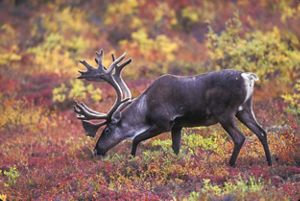

Landscapes: Nío Nę P’ęnę́ stretches 7.9 million hectares from the Turǝ́jı Dǝ́ (Twichya River) in the north to Nááts’ıhch’oh Mountain in the south, along the border of the NWT and Yukon. © Pat Kane

Caribou Monitoring: The Ni Hat'ni Dene Rangers spend weeks at a time monitoring the traditional territory of the Łutsël K’é' Dene First Nation. © Jason Michel / LKDFN

Neighbouring Nations: Shúhtaot’ınę, Métis and Tu Łidlini Dena met for the first time in 2014 to discuss the future of Nı́o Nę P’ęnę́ and mountain caribou. © Tracey Williams/Nature United

Protecting Caribou: Mountain Dene/Dena and Métis communities on both sides of the border know the key to understanding this landscape is understanding the caribou. © Public Domain
Nío Nę P’ęnę́ has long been a gathering place and a source of traditional knowledge and practices, described as the backbone of the region because it provides critical habitats for wildlife, including mountain caribou that migrate through the area.
This region is vulnerable to climate change, and in recent decades, elders observed declining numbers of caribou and moose, melting ice patches and permafrost, and increased wildfire. These concerns brought together local First Nations to discuss their concerns and make a plan to address them. Caribou are intertwined with this landscape, and their presence is key to knowing if actions taken on the ground were successful.
Their conversations led to creating the Nı́o Nę P’ęnę́ Indigenous Knowledge Hub, which enables knowledge sharing between Dene/Dena, Métis, researchers and long-term inhabitants and harvesters, including outfitters, and nurtures collaborative stewardship relationships that stretch across treaties and other political boundaries.
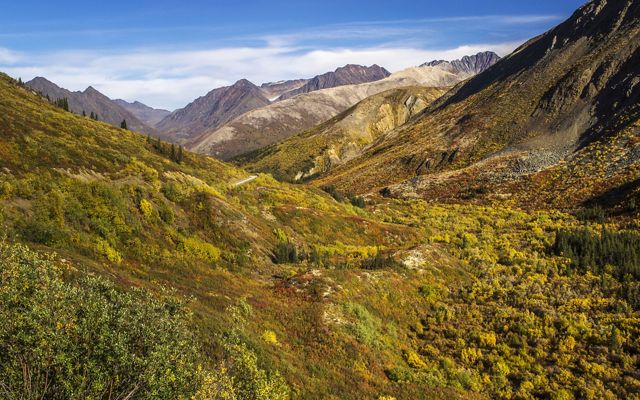
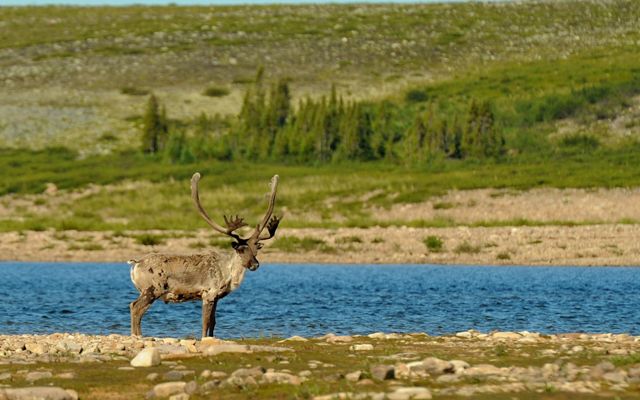
This effort is generating evidence that affirms the biocultural and socioeconomic value of Nı́o Nę P’ęnę́, as well as a framework for caribou conservation and habitat protection. It has also supported the establishment and expansion of Indigenous-led Guardian and land protection initiatives.
Tongass National Forest, Alaska
In Alaska, The Nature Conservancy helped support launching the Sustainable Southeast Partnership, an Indigenous-led collective, working to achieve community goals for well-being, economic prosperity and environmental health in the 17-million-acre Tongass National Forest.
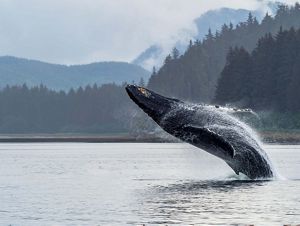

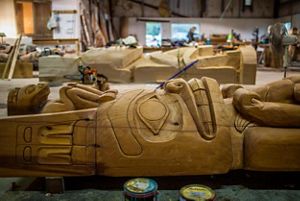
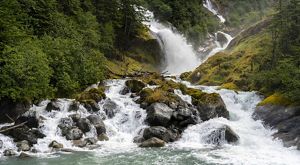

Whale Breach: Humpback whale breaching, near Hoonah AK. © John Overbaugh/TNC Photo Contest 2022

Old Growth Forest: Old-growth forest near Hatchery Creek Falls near Klowak, Alaska. The Tongass National Forest is home to part of the largest intact temperate rainforest remaining on Earth. © Chris Crisman

Haida Culture Camp: Master carvers work on carving totem poles for the Haida Culture Camp in Hydaburg on Prince of Wales Island in Southeast Alaska. © Erika Nortemann/The Nature Conservancy

Tongass National Forest: A waterfall in the Tongass National Forest © Bob Waldrop
As decisions about the forest's future were made in Washington, D.C., Alaska Natives were largely left out of the process, which pitted the timber industry, conservationists and Alaska Native Tribes and corporations into seemingly intractable adversarial positions.
In time, however, it became clear that continuing to fight wasn’t serving anyone. Led by Alaska Native organizations, parties to the conflict began meeting to identify their shared goals and priorities. Step by tiny step, a more sustainable approach to managing the forest began to emerge, and the Sustainable Southeast Partnership was formed to bring that approach to life.
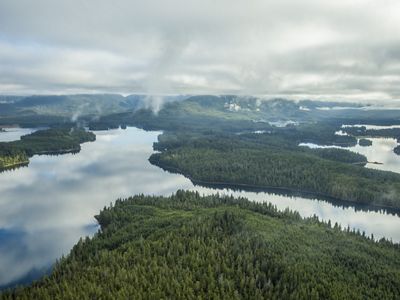
Today, the partnership provides a salary match to community and regional catalysts, roles held in more than 20 tribes and community organizations around the region.
Careful stewardship of these lands provides jobs, rich habitat for wildlife and maintained cultural practices. Beyond these benefits, scientists estimate the Tongass stores up to 20% of the carbon held in the U.S. national forests, storage that is globally significant.




The Partnership works to support Alaskan Youth Stewards, young people hired to take on natural resource and cultural stewardship projects to gain job experience and leadership skills. For nearly a decade, youth crews have worked to build and maintain trails, restore streams, harvest traditional foods and plant community gardens.

